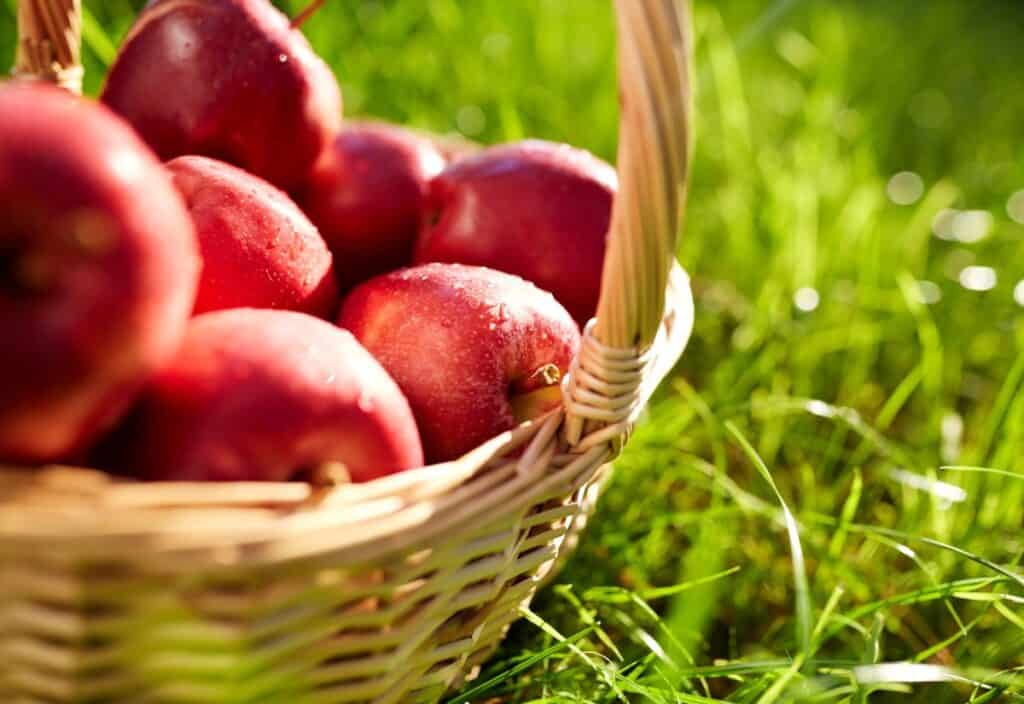With September’s drop in temperatures signaling a return to autumnal traditions, it’s the time of year to gather around bonfires and indulge in fall’s cozy flavors. But this year, one fruit is quietly taking center stage. Not the crunchy Honeycrisp or the sweet Gala, it’s the rediscovery of heritage apples.

Heritage apples bring more than just their rich, nostalgic flavor to your fall tables. They offer a taste of history, a connection to sustainable agriculture and the opportunity to reinvent classic fall dishes in your kitchens. Read on to discover why heritage apples are making a comeback and how you can savor their unique qualities this season.
The roots of heritage apples
Heritage apples, sometimes called heirloom apples, used to be a staple of American orchards. During the early colonization of North America, European settlers brought apple seeds and grafted trees, which evolved in their new environments over time, explains the Virtual Apple Parer Museum. These heirloom varieties included the Northern Spy, Roxbury Russet and Arkansas Black among hundreds of others, each carrying a unique flavor profile and history depending on the region where they grew.
Once renowned for their diverse flavors and hardy nature, heritage apples declined in popularity with the rise of industrial agriculture. According to R Street, in the mid-20th century, commercial apple production moved towards a few standard varieties that could grow quickly, store easily and look good on shelves. This shift left behind several apple varieties that could not meet the commercial criteria — including heritage apples.
Out of favor, back in vogue
Standard flavors like Gala, Fuji and Red Delicious have dominated the shelves for years. These are grocery store staples because they can withstand long shipping distances. Many argue that they don’t pack the flavor punch and lack the variety that makes heritage apples so delicious. In recent years, however, the United States Department of Agriculture has documented shifts in apple production, with growers introducing more interesting varieties to respond to consumer demands for more unique and sustainable options.
This is why heritage apples stand out; their sheer variety of flavors, textures and colors offer something different from the predictability of mass-market options. The Northern Spy, for instance, is known for its tartness and firmness, credited for being an excellent apple to bake with. Its distinct flavor offers a delicious contrast to sugar, making it a great option for apple pies, crisps and tarts. In contrast, the Roxbury Russet is more complex and spicy, pairing well with savory dishes or on its own. For a unique experience, the Arkansas Black apple stands out with its deep, wine flavor and coloring.
To truly appreciate their diversity, it’s best to shop local. Farmer’s markets and local orchards offer endless options to help you discover your favorite flavors. Even more, you’ll be supporting the local economy.
The sustainable choice
Heritage apples symbolize sustainability that ties into a larger movement for biodiverse, local food production. Research in the Agricultural Systems journal explains that consumers in the last two decades have been more willing to pay a premium for local over non-local food. Why? Because this choice, starting with fruits like heritage apples, is a way to reconnect with traditional farming and support farmers who preserve these unique varieties.
Supporting local farmers becomes even more crucial in the face of climate change. Many of the apple varieties you find in the store are bred for uniform, high yields, often at the cost of genetic diversity. Heritage apples, on the other hand, have hundreds of varieties, making them naturally more resistant to local pests and diseases. Over time, growing a wider range of apple varieties helps farmers ensure that their orchards are more resilient to climate change and reduces the risk of crop failure.
Local farms also help to preserve regional food cultures. Because several heritage apple varieties are specific to the area where they are grown, they have become linked to centuries-old traditions and recipes. By reviving these apples, you can help to preserve not only agricultural biodiversity but also the cultural heritage of their regions.
From orchard to oven
If you’re ready to embrace the heirloom apple revival, consider bringing them into your kitchen. These apples promise a rich and nuanced flavor that can lift all your cozy classics. Apple spiced cookies are a fall table staple that can be taken up a notch with the Gravenstein apple. Known for its perfect balance of tart and sweet, this apple can enhance the warmth of the cinnamon and nutmeg, offering a refreshing contrast.
Try an apple-baked oatmeal with the Northern Spy apple for a delicious and out-of-the-ordinary breakfast. This heritage variety has a crisp texture and soft sweetness. It also holds up well in an oven, giving your cozy morning meal a satisfying bite.
As you explore more varieties of heritage apples, you’ll discover their unique flavors and textures, developing your favorites as you go. Each type offers new twists that you can use to elevate your favorite dishes. Whether cooking or baking, these apples provide the perfect opportunity to experiment with fall flavors.
Returning to tradition
Heritage apples are a return to centuries-old fall traditions, sustainable farming and connections to foods that define fall. From a classic apple pie to a savory tart, or even just enjoyed on their own, heirloom apples bring a depth that modern varieties cannot compete with. So this fall, head to your local farmer’s market and experience this season’s bounty in a new way.
Mandy Applegate is the creator behind Splash of Taste and four other high-profile food blogs. She’s also a co-founder of Food Drink Life Inc., the unique and highly rewarding collaborative blogger project. Her articles appear frequently on major online news sites and she always has her eyes open to spot the next big trend.
This article originally appeared on Food Drink Life.